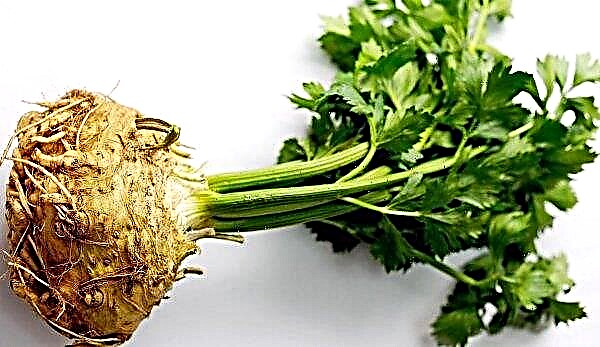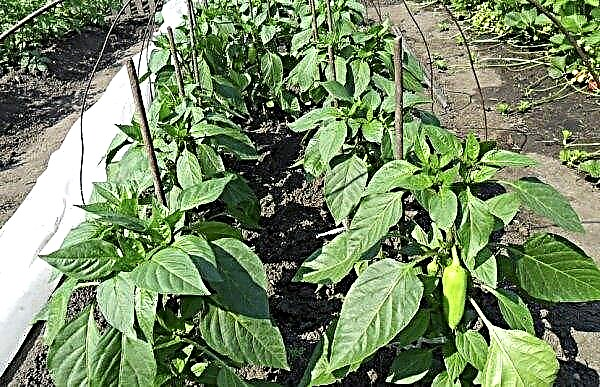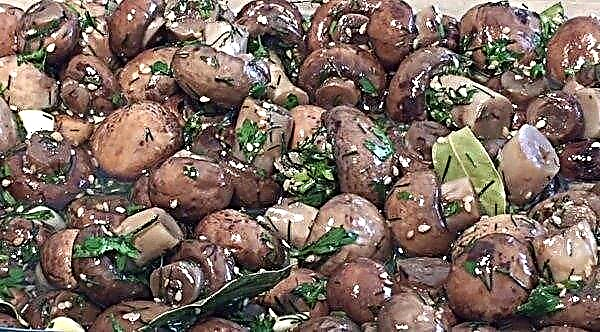In the midst of the summer heat, fruits begin to ripen, and it is time to take care of the winter harvest. During this period, housewives cook jams and jams from various berries and fruits for the winter. This article will give apricot jam recipes with lemon and almond.
Selection and preparation of ingredients
Ripe apricot fruit is used to make fruit sweets. Fruits should be flawless, with skin without dark or rotten spots. For these purposes, it is also important to choose an apricot variety in which the bone is easily separated from the fruit pulp.
Before starting to cook, the fruits are washed under running water, after which they are laid out on a kitchen towel made of natural fabric for drying. From dried fruit, it is necessary to extract the seeds. To do this, use a small kitchen knife with which each apricot is cut lengthwise and a stone is taken out.

If lemons are used in the recipe, they must first be thoroughly washed with hot water (with soap and water) and rinsed in clean water. Dry lemons are wiped dry with a kitchen towel or towel.
To cook jams you need to use a cooking container with a thick bottom. This is the main condition that the jam during cooking does not burn and does not acquire an unpleasant bitterness.
Did you know? In the Middle Age sugar It was extremely expensive and inaccessible to ordinary people, therefore, for winter harvesting, fruits and berries were cooked on honey obtained in the hollows of trees from wild bees.
Seedless apricot jam recipes with lemon for the winter
There are many different recipes for apricot jam. Sometimes their names are slightly different and may sound like jam or marmalade. Differences in the names of the sweet dish depend on the country from which the recipe originated and the consistency of the final product. But all these dishes, in fact, are jam, since for their preparation the fruits are combined with sugar and other ingredients and boiled for some time.
Classic recipe

3 cans of 0.5 l each 60 minutes
seedless apricots
950 g
lemon juice
from half a lemon
lemon zest
from one fruit
Nutritional value per 100 g:
 Before starting cooking, the hostess should inspect apricots peeled. Next, each half of the apricot needs to be finely chopped with a sharp knife. The same operation can be done using a blender or food processor.
Before starting cooking, the hostess should inspect apricots peeled. Next, each half of the apricot needs to be finely chopped with a sharp knife. The same operation can be done using a blender or food processor. Now you need to remove the zest from the lemon, for this use the smallest grater (carrot or potato). The zest is the yellow skin of the fruit, it must be removed so as not to catch the white layer located between the skin and the flesh of the lemon. Cut chopped lemon zest is temporarily laid aside.
Now you need to remove the zest from the lemon, for this use the smallest grater (carrot or potato). The zest is the yellow skin of the fruit, it must be removed so as not to catch the white layer located between the skin and the flesh of the lemon. Cut chopped lemon zest is temporarily laid aside. The peeled lemon is cut into two halves and a bone is taken out of the fruit with a knife. After this, the lemon pulp is deeply pierced in many places with the tip of a knife and squeezed juice from the fruit.
The peeled lemon is cut into two halves and a bone is taken out of the fruit with a knife. After this, the lemon pulp is deeply pierced in many places with the tip of a knife and squeezed juice from the fruit. At the bottom of a thick-walled pan pour some sugar. Prepared sliced fruit is placed in a pan and poured on top with the remaining sugar. Lemon juice is added to apricot jam. Even if the main ingredient of jam, apricots, has a very sour taste, you still need to add lemon juice to the dish.
At the bottom of a thick-walled pan pour some sugar. Prepared sliced fruit is placed in a pan and poured on top with the remaining sugar. Lemon juice is added to apricot jam. Even if the main ingredient of jam, apricots, has a very sour taste, you still need to add lemon juice to the dish.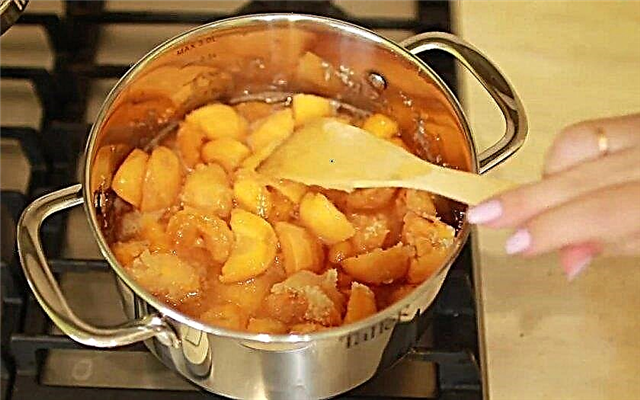 A very slow fire is set under a container of fruit and sugar, on which the mixture is brought to a boil. During boiling, fruits produce a large amount of juice. The hostess needs to periodically stir the heating mixture so that all the sugar is melted in the juice.
A very slow fire is set under a container of fruit and sugar, on which the mixture is brought to a boil. During boiling, fruits produce a large amount of juice. The hostess needs to periodically stir the heating mixture so that all the sugar is melted in the juice.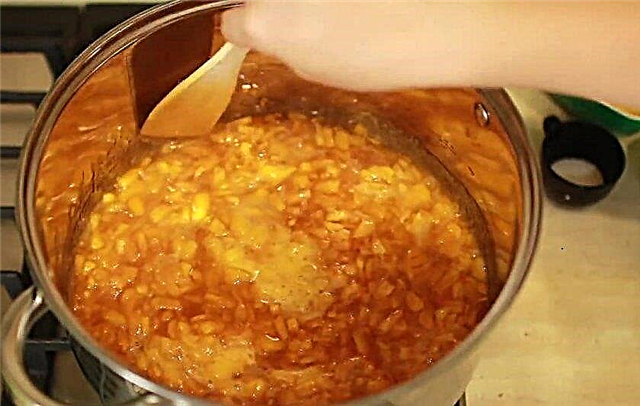 The mixture boiling over low heat is stirred with a wooden spatula and left to cook for another 15 minutes. If during cooking too much foam forms on the surface of the bubbling fruit mixture, it is better to carefully remove it with a spoon and remove.
The mixture boiling over low heat is stirred with a wooden spatula and left to cook for another 15 minutes. If during cooking too much foam forms on the surface of the bubbling fruit mixture, it is better to carefully remove it with a spoon and remove.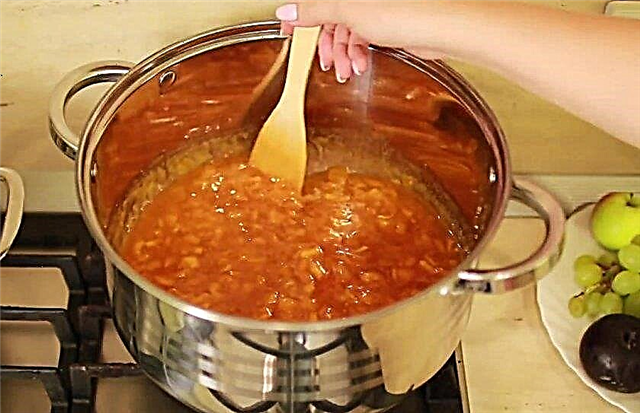 After 15 minutes of cooking, lemon zest and vanilla sugar are added to the dish, then the hot fruit mixture is mixed well and boiled for another 1-2 minutes. Next, the contents of the pan are cooled.
After 15 minutes of cooking, lemon zest and vanilla sugar are added to the dish, then the hot fruit mixture is mixed well and boiled for another 1-2 minutes. Next, the contents of the pan are cooled. The container with the cooled fruit mixture is again set to a slow fire and brought to a boil, after which it is again boiled for 15 minutes.
The container with the cooled fruit mixture is again set to a slow fire and brought to a boil, after which it is again boiled for 15 minutes.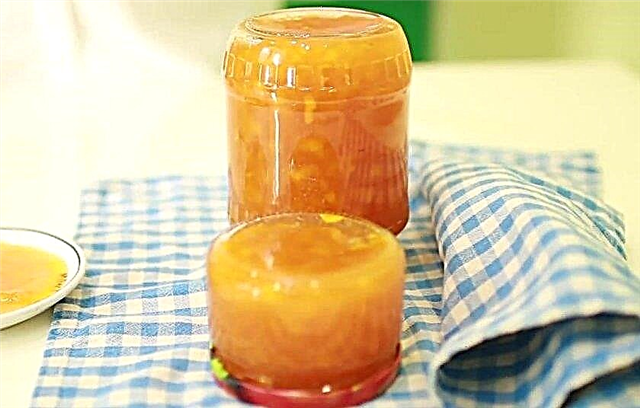 Ready hot jam is poured into dry sterilized jars and set aside to cool completely. Jars with cooled fruit sweetness can be rolled up with metal lids using a seaming key, or closed with ordinary plastic lids.
Ready hot jam is poured into dry sterilized jars and set aside to cool completely. Jars with cooled fruit sweetness can be rolled up with metal lids using a seaming key, or closed with ordinary plastic lids.
Important! Jam according to this recipe can be prepared with the replacement of lemon and orange in the same proportions; the taste from this will not worsen, the dish will be unusual, tasty and aromatic, with a pleasant acidity.
Video recipe
With almonds and lemon

2 cans of 2 l each 60 minutes
seedless apricots
3 kg
Nutritional value per 100 g:
- Apricot halves are placed in a container for cooking jam in layers, pouring each layer with sugar. A container filled with sugar fruit set aside for a day to allocate juice.
- Almonds are peeled. To do this, almonds are placed in a deep bowl and poured with boiling water. Nuts in hot water are slowly mixed with a spoon. At the same time, from the nuts, under the influence of boiling water, the skin separates and floats to the surface. The liquid, along with the almond skin, is drained.
- If not all the skin is removed, the operation is repeated several times until a satisfactory result is obtained. If the hostess wants, almonds can be replaced with walnuts. Walnut kernels also need to be pre-cleaned of the films with boiling water.
- Separated juice is drained, brought to a boil and poured apricots with boiling liquid. Then again left for a day to insist. In the next step, the operation is repeated once more with the same waiting period. When bringing jam to a boil for the third time, peeled almonds and lemon sliced into thin slices are added to the boiling mixture. The thickness of a lemon slice should not exceed 0.5 mm.
- Next, boiled jam is cooked for 15 minutes. Water is not added during cooking, sugar dissolves in fruit juice. In the process of heating, the apricot halves, almond kernels and lemon slices are mixed with a wooden spoon. It is necessary to ensure that during mixing the fruit halves do not lose their integrity and do not turn into porridge. During drilling, the emerging foam is regularly removed from the jam.
- Ready apricot jam is removed from the fire and poured into previously prepared dry sterilized jars. The final product has an amber color and a sweet taste. Hot treats are tightly sealed with metal lids.

Ways to store at home
To preserve the jam, you need low plus temperatures, for example, a range from +1 to + 20 ° C. At higher temperatures, jam can begin to wander and deteriorate. The hostess needs to know that jam is not afraid of frost, therefore it can also be stored at sub-zero temperatures, however, it is important to remember that sub-zero temperatures adversely affect glass, from which cans are usually made for preservation. Often, glass jars crack under the influence of frost.
Did you know? According to the botanical classification, the fruit of the apricot is a succulent monopod.
Based on the recommended temperatures, jam can be kept in a cool pantry, basement or cellar. Also, kitchen cabinets are located for storing this type of workpieces, located far from heating appliances and having a constant temperature inside.

If you plan long-term storage of jam jammed in cans in the cellar, where it is often excessively wet, it is recommended to grease the metal cans on the cans with a thin layer of vegetable oil. A greasy film will protect the metal from corrosion and the appearance of holes, and therefore, the workpiece will not deteriorate.
Important! For jam, it is convenient to use cans that have a special screw notch on their necks and are equipped with screw-shaped metal lids. Such cans can be quickly and tightly closed without the use of a seaming key, and utensils can also be reused for several years.
There are many recipes for apricot jam with lemon with various expenses of time for their preparation. The hostess can choose a quick recipe that does not require long work, or cook in several stages for several days. Cooked according to any of the above recipes, a sweet treat will turn out to be very tasty and with an excellent aroma.

 Before starting cooking, the hostess should inspect apricots peeled. Next, each half of the apricot needs to be finely chopped with a sharp knife. The same operation can be done using a blender or food processor.
Before starting cooking, the hostess should inspect apricots peeled. Next, each half of the apricot needs to be finely chopped with a sharp knife. The same operation can be done using a blender or food processor. Now you need to remove the zest from the lemon, for this use the smallest grater (carrot or potato). The zest is the yellow skin of the fruit, it must be removed so as not to catch the white layer located between the skin and the flesh of the lemon. Cut chopped lemon zest is temporarily laid aside.
Now you need to remove the zest from the lemon, for this use the smallest grater (carrot or potato). The zest is the yellow skin of the fruit, it must be removed so as not to catch the white layer located between the skin and the flesh of the lemon. Cut chopped lemon zest is temporarily laid aside. The peeled lemon is cut into two halves and a bone is taken out of the fruit with a knife. After this, the lemon pulp is deeply pierced in many places with the tip of a knife and squeezed juice from the fruit.
The peeled lemon is cut into two halves and a bone is taken out of the fruit with a knife. After this, the lemon pulp is deeply pierced in many places with the tip of a knife and squeezed juice from the fruit. At the bottom of a thick-walled pan pour some sugar. Prepared sliced fruit is placed in a pan and poured on top with the remaining sugar. Lemon juice is added to apricot jam. Even if the main ingredient of jam, apricots, has a very sour taste, you still need to add lemon juice to the dish.
At the bottom of a thick-walled pan pour some sugar. Prepared sliced fruit is placed in a pan and poured on top with the remaining sugar. Lemon juice is added to apricot jam. Even if the main ingredient of jam, apricots, has a very sour taste, you still need to add lemon juice to the dish. A very slow fire is set under a container of fruit and sugar, on which the mixture is brought to a boil. During boiling, fruits produce a large amount of juice. The hostess needs to periodically stir the heating mixture so that all the sugar is melted in the juice.
A very slow fire is set under a container of fruit and sugar, on which the mixture is brought to a boil. During boiling, fruits produce a large amount of juice. The hostess needs to periodically stir the heating mixture so that all the sugar is melted in the juice. The mixture boiling over low heat is stirred with a wooden spatula and left to cook for another 15 minutes. If during cooking too much foam forms on the surface of the bubbling fruit mixture, it is better to carefully remove it with a spoon and remove.
The mixture boiling over low heat is stirred with a wooden spatula and left to cook for another 15 minutes. If during cooking too much foam forms on the surface of the bubbling fruit mixture, it is better to carefully remove it with a spoon and remove. After 15 minutes of cooking, lemon zest and vanilla sugar are added to the dish, then the hot fruit mixture is mixed well and boiled for another 1-2 minutes. Next, the contents of the pan are cooled.
After 15 minutes of cooking, lemon zest and vanilla sugar are added to the dish, then the hot fruit mixture is mixed well and boiled for another 1-2 minutes. Next, the contents of the pan are cooled. The container with the cooled fruit mixture is again set to a slow fire and brought to a boil, after which it is again boiled for 15 minutes.
The container with the cooled fruit mixture is again set to a slow fire and brought to a boil, after which it is again boiled for 15 minutes. Ready hot jam is poured into dry sterilized jars and set aside to cool completely. Jars with cooled fruit sweetness can be rolled up with metal lids using a seaming key, or closed with ordinary plastic lids.
Ready hot jam is poured into dry sterilized jars and set aside to cool completely. Jars with cooled fruit sweetness can be rolled up with metal lids using a seaming key, or closed with ordinary plastic lids.
